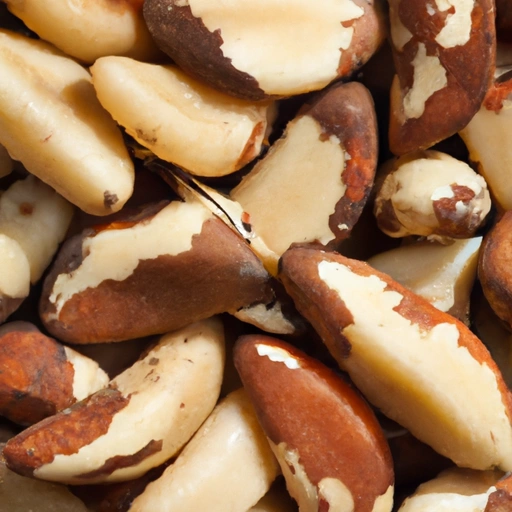Brazil Nut
Description

The Brazil nut (Bertholletia excelsa) is a large, dense nut that is native to the Amazon rainforest. Known for its creamy texture and rich, nutty flavor, it is a popular ingredient used in a variety of culinary applications around the world. In addition to its use in recipes, Brazil nuts are often consumed raw or roasted as a snack.
Common uses
Brazil nuts are most commonly enjoyed raw or roasted, and can also be chopped or ground for use in various dishes. They are a frequent addition to mixed nuts, used in confectionery, such as chocolate truffles and nut bars, and can be found in certain pestos or as a topping for salads and desserts.
Nutritional value
Calories
A 1-ounce (28-gram or approximately 6 nuts) serving of Brazil nuts contains around 187 calories.
Protein
This serving size provides about 4 grams of protein.
Fat
Brazil nuts are high in fat, with around 19 grams per serving, predominantly monounsaturated and polyunsaturated fats.
Carbohydrates
They contain about 3 grams of carbohydrates, mostly dietary fiber.
Vitamins
Brazil nuts are an excellent source of Vitamin E and several B vitamins.
Minerals
They are particularly renowned for their high selenium content, providing over 1000% of the Recommended Dietary Allowance (RDA) in just one nut. They also provide magnesium, phosphorus, copper, and zinc.
Health benefits
Brazil nuts offer various health benefits due to their nutrient profile. The high selenium content is known for its antioxidant properties and contribution to a healthy immune system. The healthy fats can contribute to heart health, while the fiber supports digestive health.
Potential risks
Due to their extremely high selenium content, consuming too many Brazil nuts can lead to selenium toxicity. People with nut allergies should also avoid Brazil nuts.
Common recipes
Brazil nuts are used in a variety of recipes, such as nut loaves, cookies, and cakes. They can also be blended into smoothies or used to make nut milk and nut butters.
Cooking methods
They can be eaten raw, roasted, or soaked. Roasting enhances their flavor and can be done in an oven at 350°F (about 175°C) for 10-15 minutes.
Pairing with other ingredients
The nuts pair well with chocolate, fruits, and other nuts. Their creamy texture also complements savory dishes like rice pilaf or salads.
Summary
Brazil nuts are a versatile and nutritious ingredient suitable for a range of culinary uses. Whether incorporated into sweet or savory dishes, or enjoyed on their own, they provide a wealth of nutrients and a distinct flavor that enhances any recipe.